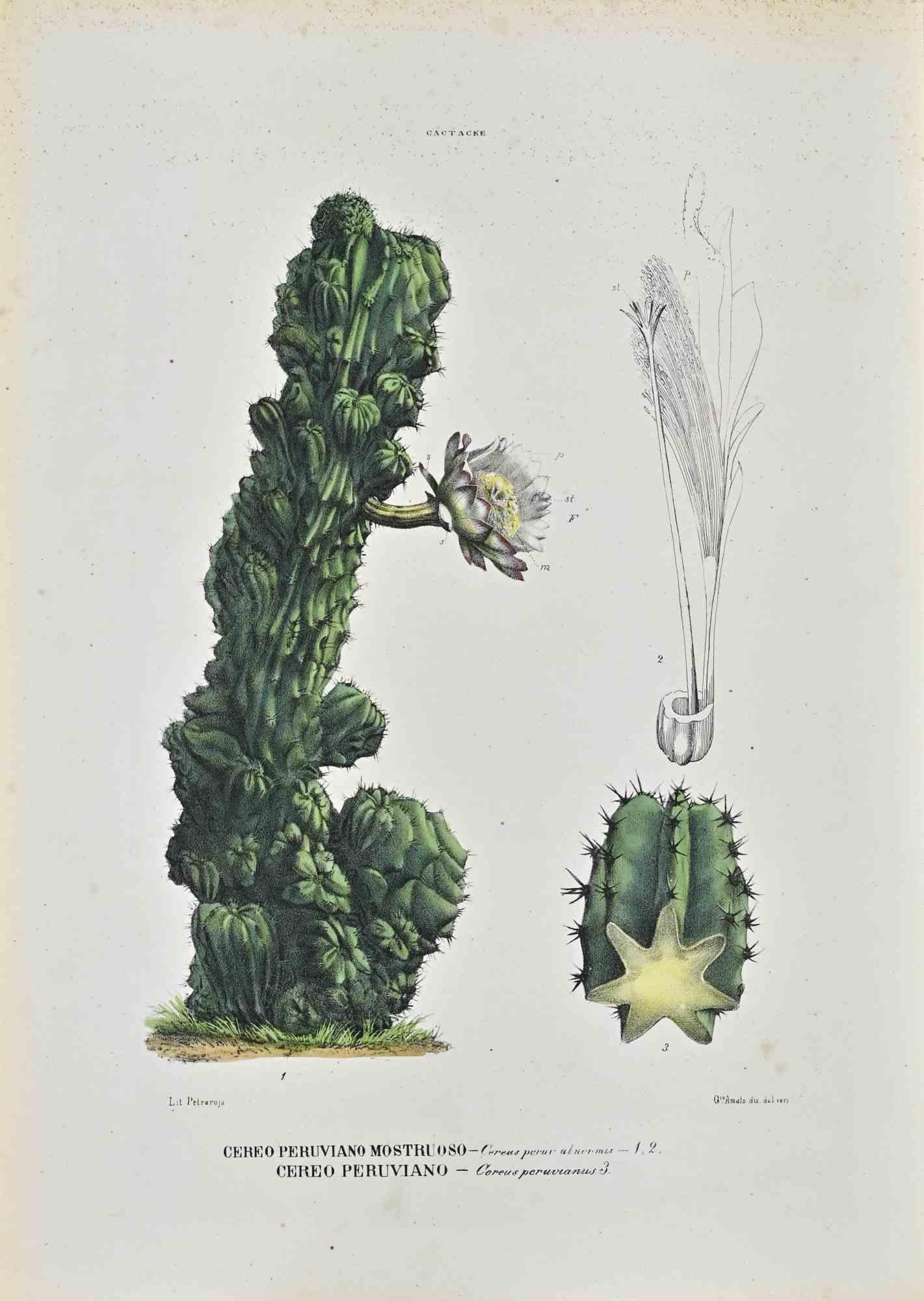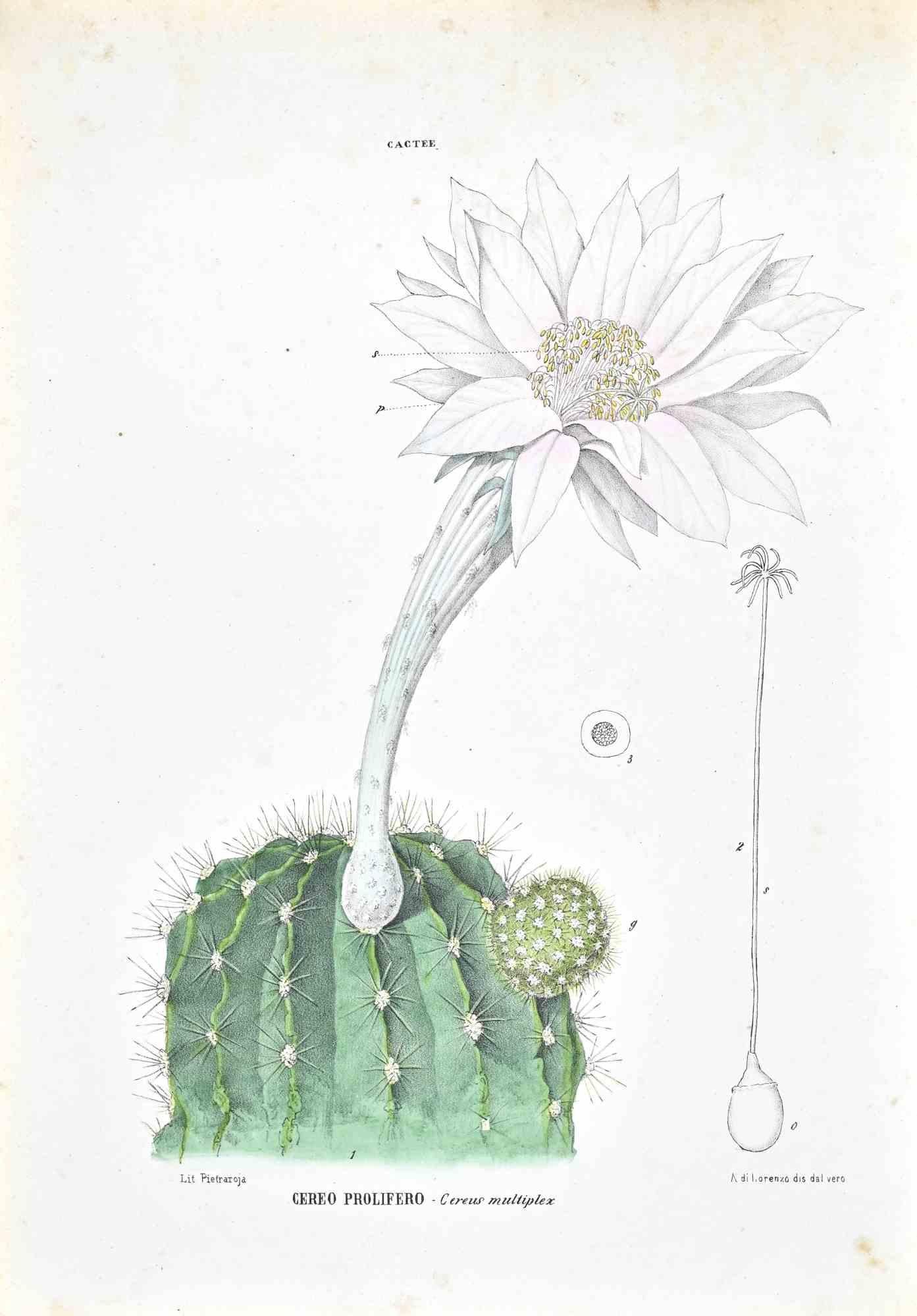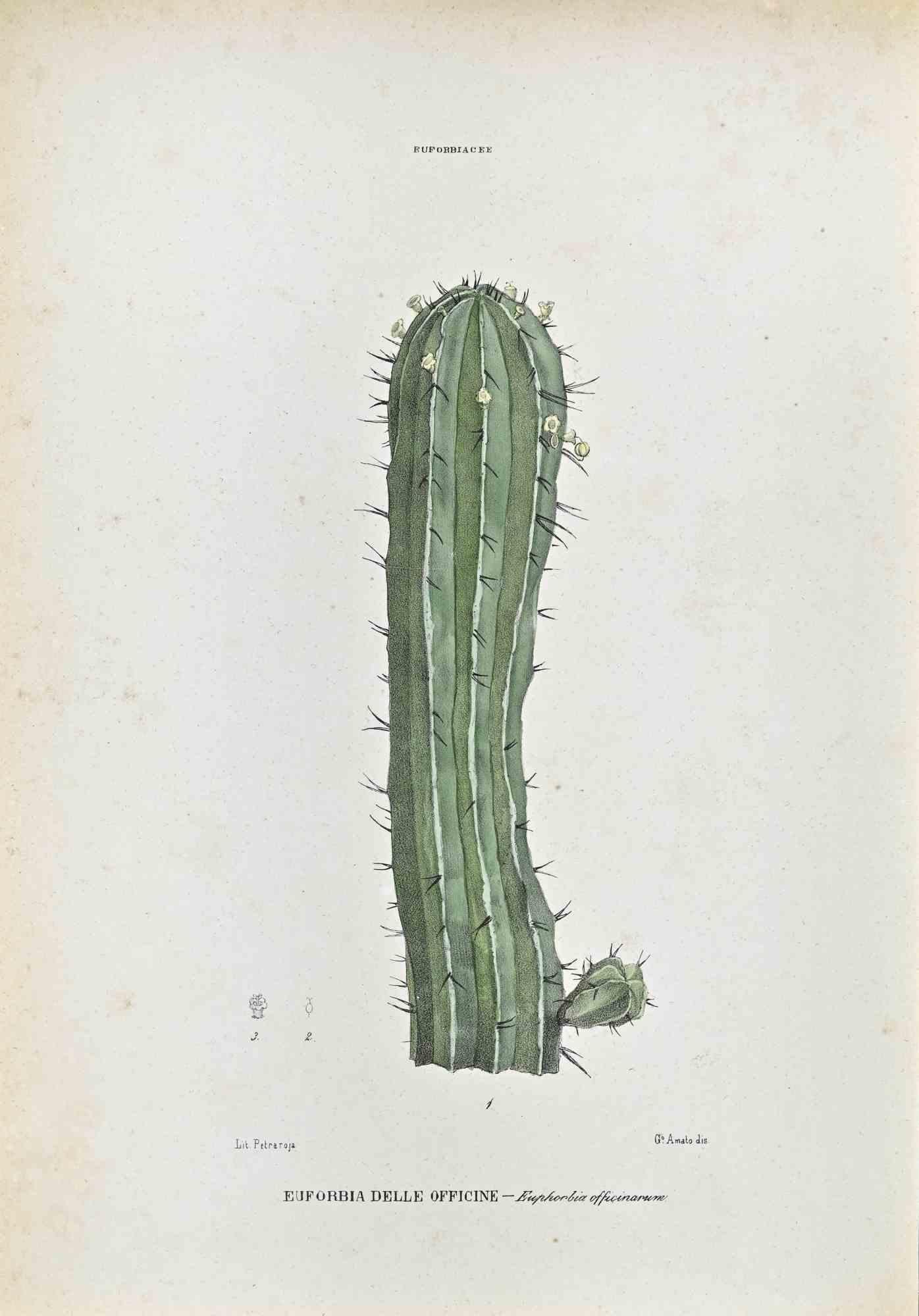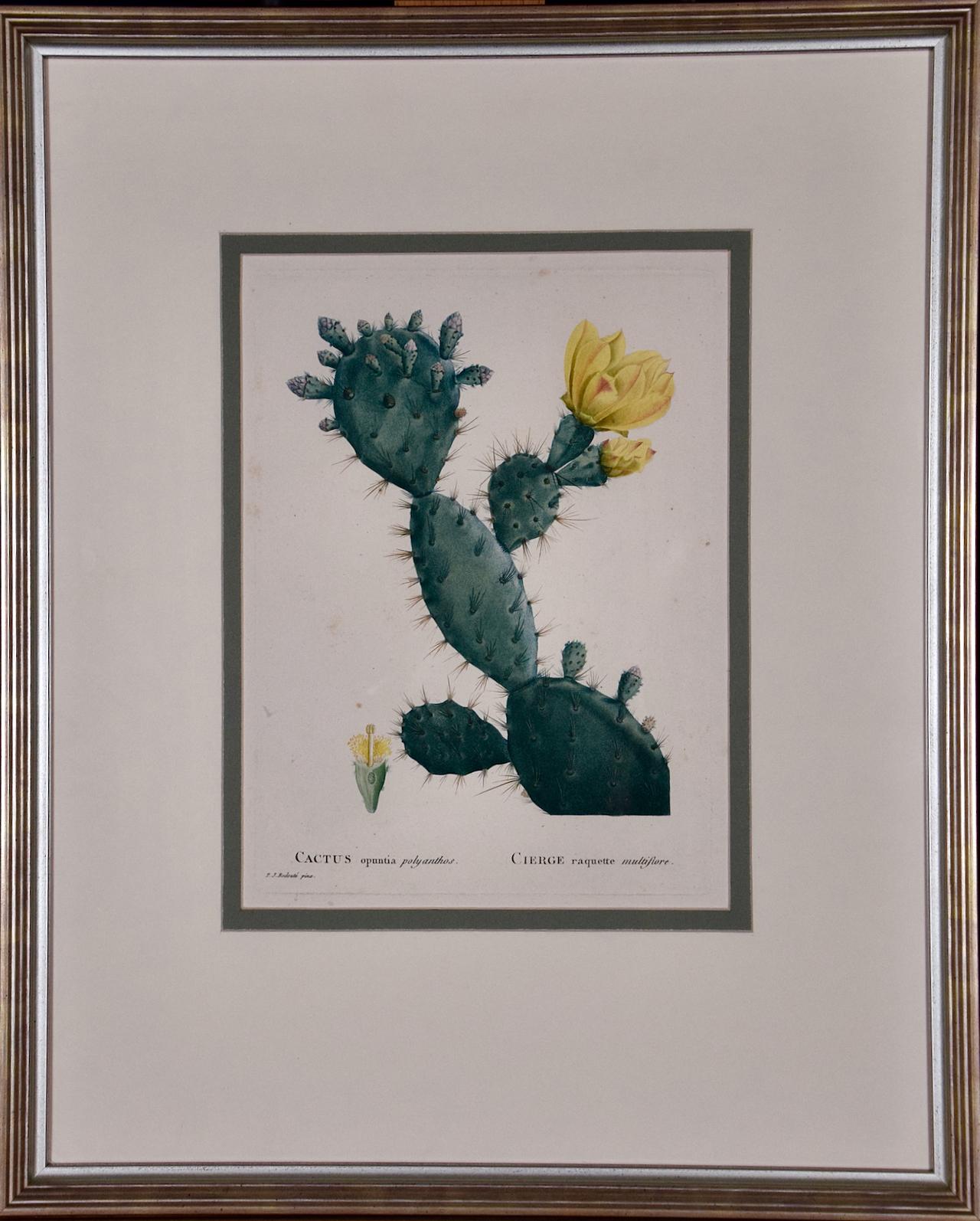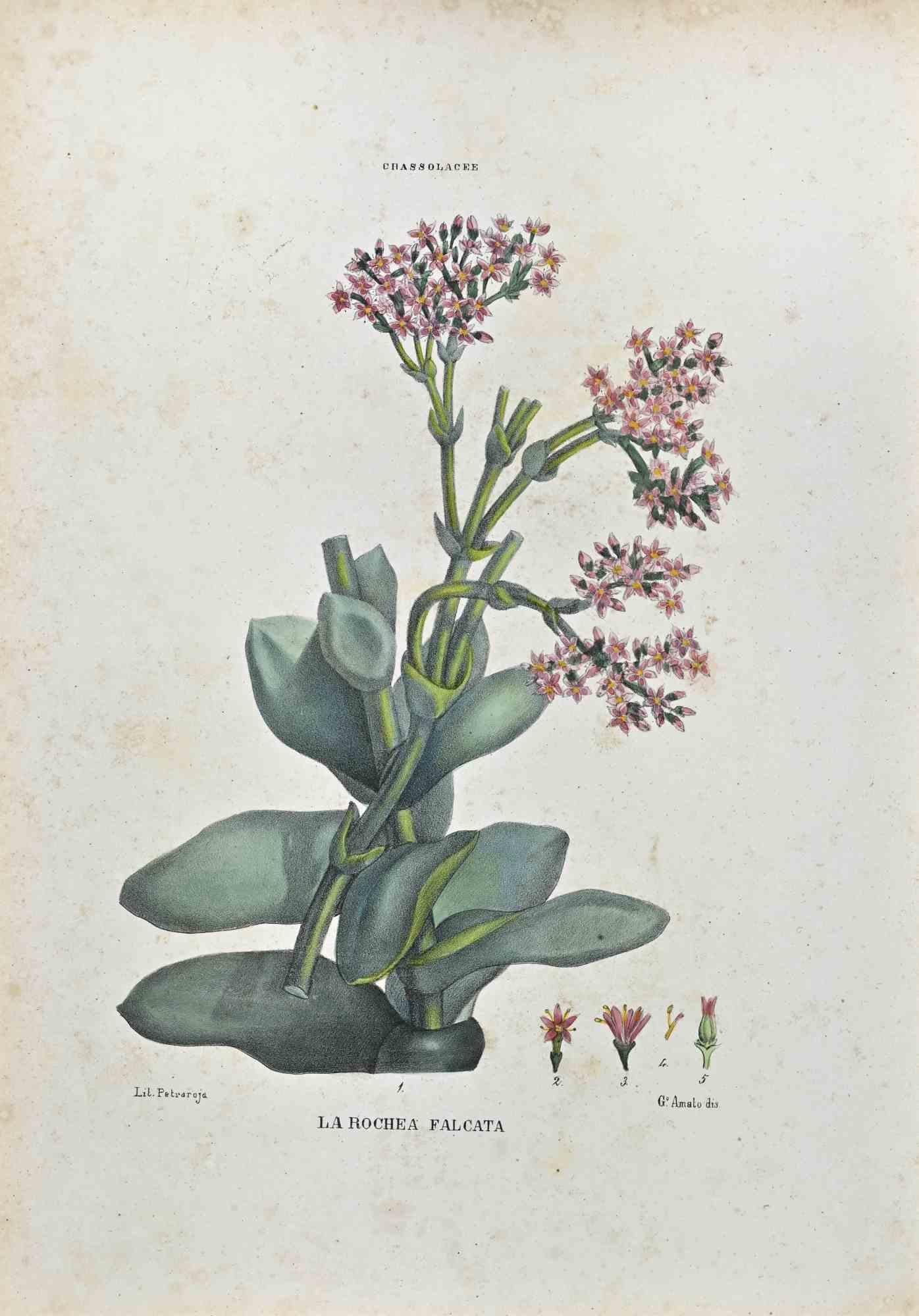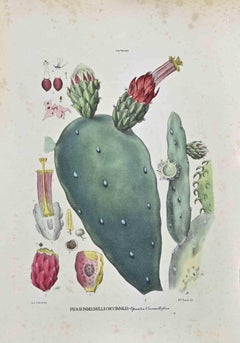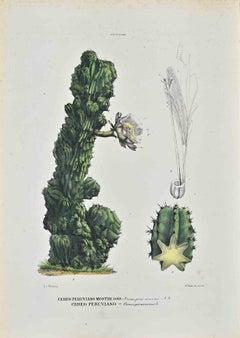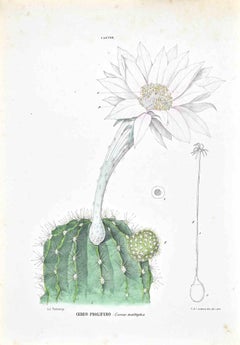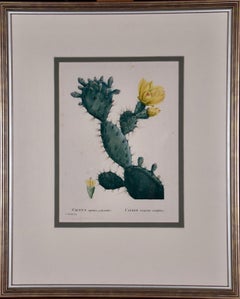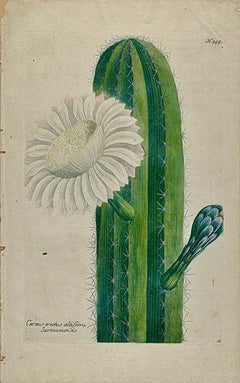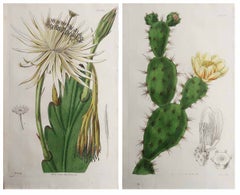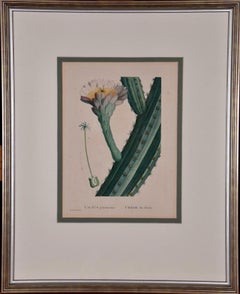Items Similar to The Cactaceae - Lithograph by Vincenzo Tenore - 1870s
Want more images or videos?
Request additional images or videos from the seller
1 of 5
Vincenzo TenoreThe Cactaceae - Lithograph by Vincenzo Tenore - 1870s1870s
1870s
$236.07
£179.79
€200
CA$330.92
A$362.03
CHF 189.08
MX$4,326.37
NOK 2,375.56
SEK 2,235.78
DKK 1,523.44
About the Item
Lithograph hand watercolored.
Plate from "Atlante di Botanica popolare ossia Illustrazione di Piante Notevoli di ogni famiglia" (Atlas of popular botany or illustration of notable plants of each family), published in Napoli, by Raimondo Petrajola, in 1872/76.
This is the first edition of a popular suite illustrating in a clear and beautiful way the different species of plants.
Very good condition
The author (1825-1886) was the grandson of the eminent Italian botanist Michele Tenore, director of the botanical garden of Naples, professor of botany, and author of numerous scientific works. Vincenzo followed in his uncle's footsteps and became honorary professor of botany at the university. Vincenzo Tenore's herbarium, as well as that of his uncle, are preserved at the Botanical Institute of the University of Naples.
- Creator:Vincenzo Tenore
- Creation Year:1870s
- Dimensions:Height: 15.36 in (39 cm)Width: 11.42 in (29 cm)Depth: 0.04 in (1 mm)
- Medium:
- Movement & Style:
- Period:
- Framing:Framing Options Available
- Condition:Insurance may be requested by customers as additional service, contact us for more information.
- Gallery Location:Roma, IT
- Reference Number:Seller: T-1539441stDibs: LU650316009052
About the Seller
4.9
Platinum Seller
Premium sellers with a 4.7+ rating and 24-hour response times
1stDibs seller since 2017
7,797 sales on 1stDibs
Typical response time: 1 hour
- ShippingRetrieving quote...Shipping from: Grasse, France
- Return Policy
More From This Seller
View AllThe Cactaceae - Lithograph by Vincenzo Tenore - 1870s
Located in Roma, IT
Lithograph hand watercolored.
Plate from "Atlante di Botanica popolare ossia Illustrazione di Piante Notevoli di ogni famiglia" (Atlas of popular botany or illustration of notable p...
Category
1870s Modern Figurative Prints
Materials
Lithograph
The Cactaceae - Lithograph by Vincenzo Tenore - 1870s
Located in Roma, IT
Lithograph hand watercolored.
Plate from "Atlante di Botanica popolare ossia Illustrazione di Piante Notevoli di ogni famiglia" (Atlas of popular botany or illustration of notable p...
Category
1870s Modern Figurative Prints
Materials
Lithograph
The Cacti - Lithograph by Vincenzo Tenore - 1870s
Located in Roma, IT
Lithograph hand watercolored.
Plate from "Atlante di Botanica popolare ossia Illustrazione di Piante Notevoli di ogni famiglia" (Atlas of popular botany or illustration of notable ...
Category
19th Century Modern Figurative Prints
Materials
Lithograph
The Euphorbiaceae - Lithograph by Vincenzo Tenore - 1870s
Located in Roma, IT
Lithograph hand watercolored.
Plate from "Atlante di Botanica popolare ossia Illustrazione di Piante Notevoli di ogni famiglia" (Atlas of popular botany or illustration of notable ...
Category
19th Century Modern Figurative Prints
Materials
Lithograph
The Chassolaceae - Lithograph by Vincenzo Tenore - 1870s
Located in Roma, IT
Lithograph hand watercolored.
Plate from "Atlante di Botanica popolare ossia Illustrazione di Piante Notevoli di ogni famiglia" (Atlas of popular botany or illustration of notable ...
Category
19th Century Modern Figurative Prints
Materials
Lithograph
The Sterculaceae - Lithograph by Vincenzo Tenore - 1870s
Located in Roma, IT
Lithograph hand watercolored.
Plate from "Atlante di Botanica popolare ossia Illustrazione di Piante Notevoli di ogni famiglia" (Atlas of popular botany or illustration of notable p...
Category
1870s Modern Figurative Prints
Materials
Lithograph
You May Also Like
Flowering Prickly Pear Cactus: Framed 18th C. Hand-colored Engraving by Redoute
By Pierre-Joseph Redouté
Located in Alamo, CA
This is a hand-colored stipple engraving entitled "Cactus Opuntia Polyanthos, Cierge Raquette Multiflore" (Prickly Pear Cactus) by Pierre-Joseph Redouté, Plate 59 from his illustrated publication 'Plantarum Historia Succulentarum ou Histoire des Plantes Grasses', published in Paris in 1799. Redoute was a pioneer of the stipple engraving technique, which he used to create this image. It involves utilizing a series of small dots worked into a copper plate rather than the more common lines. These dots can be made smaller or thicker depending on the degree of opacity the artist intends for various areas of the print. When inked and applied to paper, this allows for a greater portion of the paper to be seen, which accentuates the appearance of luminosity of the subject the artist is creating. Different color inks are used in the printing process, a time consuming technique known as "a la poupee". The engraving is then finished with watercolor to further enhance the beauty and realism of the print subject.
This engraving of a flowering cactus is presented in a double mat; white outer mat and heather green inner mat.The mat measures 20" x 16" and the sheet measures 19.5" x 13.38". There are wide margins with a few short tears and chips along the the right and upper edges, which are all covered by the mat. There are small spots predominantly in the margins, but a few are present in the image area, but the print is otherwise in very good condition. There is another Redoute flowering cactus listed on 1stdibs, LU117326854582. The pair would make an attractive display grouping.
Pierre-Joseph Redouté (1759-1840), was a painter and botanist originally from Belgium, who pursued his extremely successful artistic career in France. He is well known for his watercolor paintings of roses, lilies and other flowers and their subsequent folio-sized, color stipple engravings. Some believe him to be the greatest botanical illustrator of all time. Redouté was a favorite of the French royal court at the time and of the post French...
Category
Late 18th Century Naturalistic Still-life Prints
Materials
Engraving
A Flowering Cactus Plant: 18th C. Hand-colored Botanical Engraving by Weinmann
By Johann Wilhelm Weinmann
Located in Alamo, CA
This hand-colored botanical mezzotint and line engraving by Johann Wilhelm Weinmann (1683-1741) is entitled "Cereus Erectus Altissimo Surinamensis (Cereus Cactus Plant)". It is plate...
Category
Mid-18th Century Naturalistic Still-life Prints
Materials
Engraving, Mezzotint
Pair of Original Antique Botanical Prints- Cactus. Dated 1826
Located in St Annes, Lancashire
Wonderful pair of cactus prints.
Lithographs
Original hand color
Published by S.Curtis. Dated 1826
Unframed.
Category
Antique 1820s English Georgian Prints
Materials
Paper
Flowering Cactus: A Framed 18th C. Hand-colored Engraving by Redoute
By Pierre-Joseph Redouté
Located in Alamo, CA
This framed hand-colored stipple engraving entitled "Cactus Peruvianus Cierge du Pérou" by Pierre-Joseph Redouté, Plate 58 from his illustrated publication 'Plantarum Historia Succulentarum ou Histoire des Plantes Grasses', published in Paris in 1799. It depicts a branching limb of a cactus with a beautiful flower. There is a separate detail of the anatomy of a seed with early growth. Redoute was a pioneer of the stipple engraving technique, which he used to create this image. It involves utilizing a series of small dots worked into a copper plate rather than the more common lines. These dots can be made smaller or thicker depending on the degree of opacity the artist intends for various areas of the print. When inked and applied to paper, this allows for a greater portion of the paper to be seen, which accentuates the appearance of luminosity of the subject the artist is creating. Different color inks are used in the printing process, a time consuming technique known as "a la poupee". The engraving is then finished with watercolor to further enhance the beauty and realism of the print subject.
This engraving of a flowering cactus is presented in silver-colored ribbed wood frame and a double mat; cream-colored outer mat and heather green inner mat. The frame measures 21.25" high by 17.25" wide by 1.13" deep. The sheet measures 19.88" high by 14" wide. There are wide margins with a few short tears and chips along the the left, right and upper edges, which are all covered by the mat. There are small spots predominantly in the margins, with a few present in the image area. The print is otherwise in very good condition. There is another Redoute flowering cactus listed on 1stdibs, LU117326853392, which is framed and matted identically to this one. The pair would make an attractive display grouping.
Pierre-Joseph Redouté (1759-1840), was a painter and botanist originally from Belgium, who pursued his extremely successful artistic career in France. He is well known for his watercolor paintings of roses, lilies and other flowers and their subsequent folio-sized, color stipple engravings. Some believe him to be the greatest botanical illustrator of all time. Redouté was a favorite of the French royal court at the time and of the post French...
Category
Late 18th Century Naturalistic Still-life Prints
Materials
Engraving
Set of 8 Original Antique Botanical Prints- Cactus. Dated 1837
Located in St Annes, Lancashire
Wonderful set of 8 cactus prints.
Lithographs after drawings by W.Fitch
Original hand color
Published by Curtis. Dated 1837 and 1838
Unframed.
Category
Antique 1830s English Georgian Prints
Materials
Paper
Flowering Cactus Engraving
By Johann Wilhelm Weinmann
Located in New York, NY
Original engraving by Johann Wilhelm Weinmann from "Phytanthosa Iconographia." Ratisbon, 1737-1745.
This plate: Cereus Minimus Serpens Americanus. [Cactus].
Mezzotint engraving print...
Category
Early 18th Century Prints and Multiples
Materials
Laid Paper
More Ways To Browse
Ben Shahn Signed Lithographs
Ben Shahn Signed Prints
Benji Asada
Bieres De La Meuse
Braniff Poster
Brian Clarke
Bruno Schulz
Caroline Durieux On Sale
Chagall Arabian Nights
Chagall In The Land Of Gods
Chagall Maternity
Chagall Paysage
Chagall Romeo
Chagall Ruth Gleaning
Chagall Signed Poster
Christ And The Rembrandt
Christian Silvain
Clemens Briels On Sale

